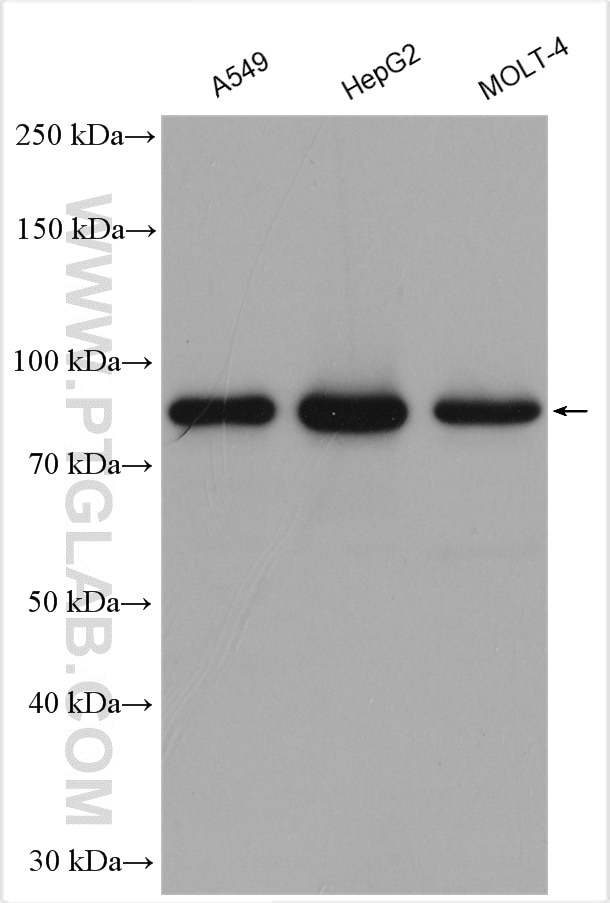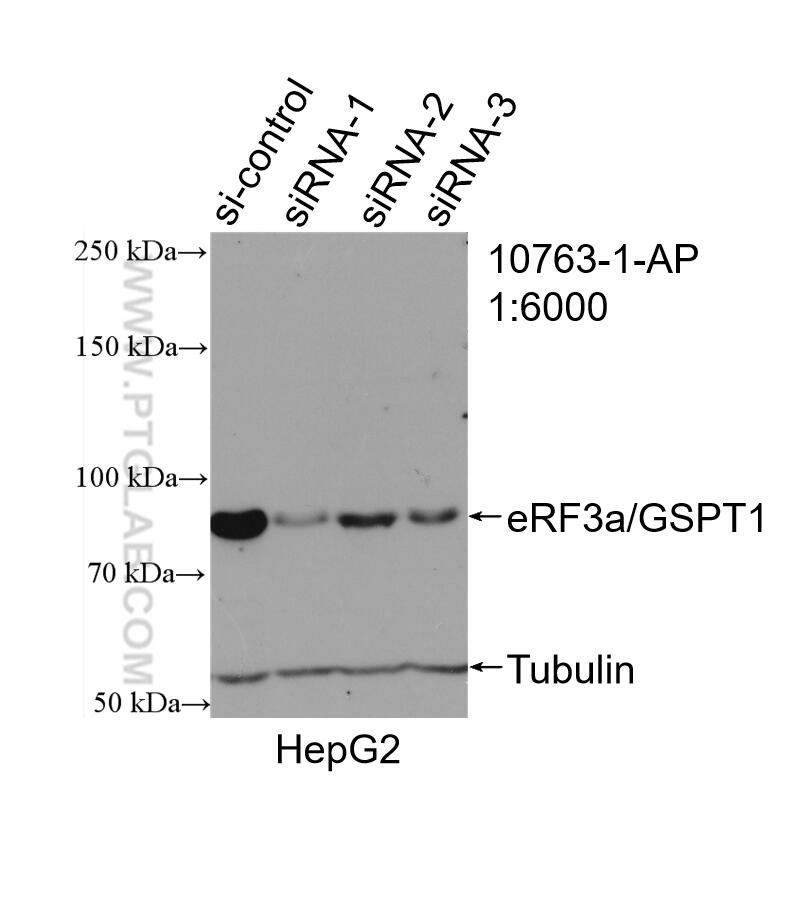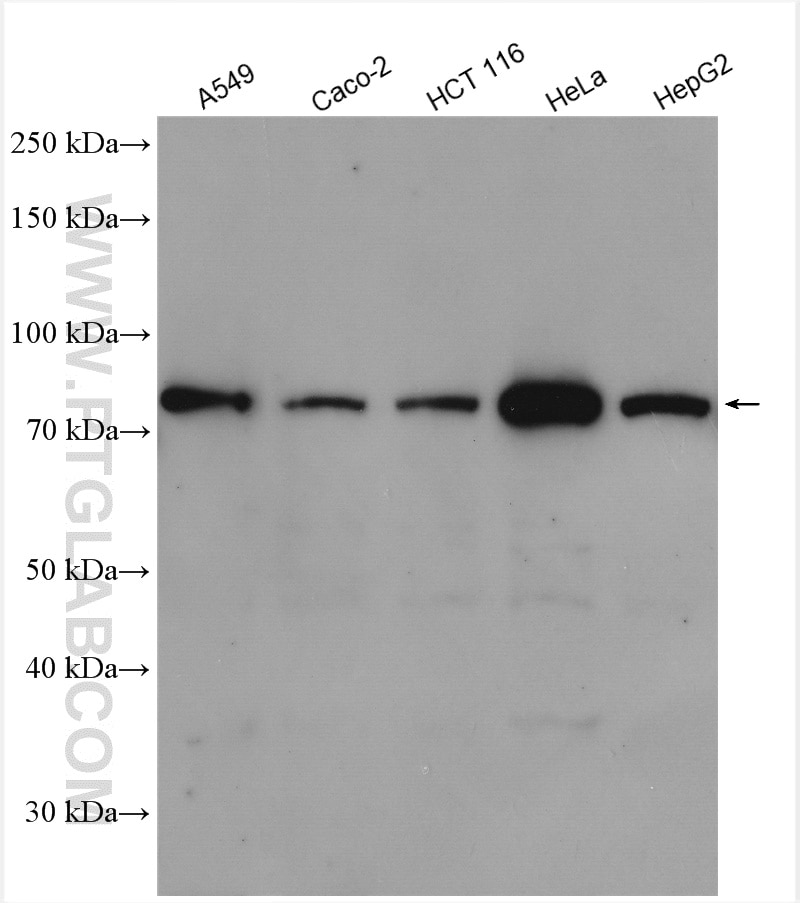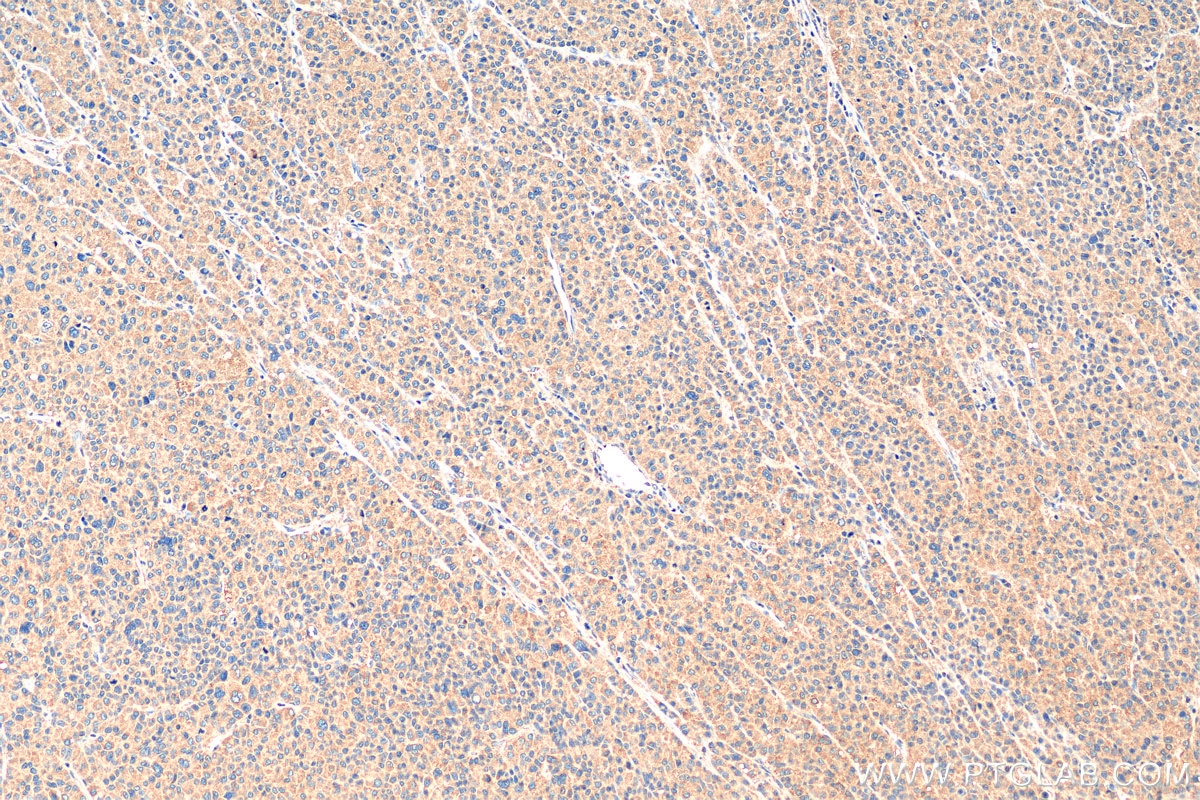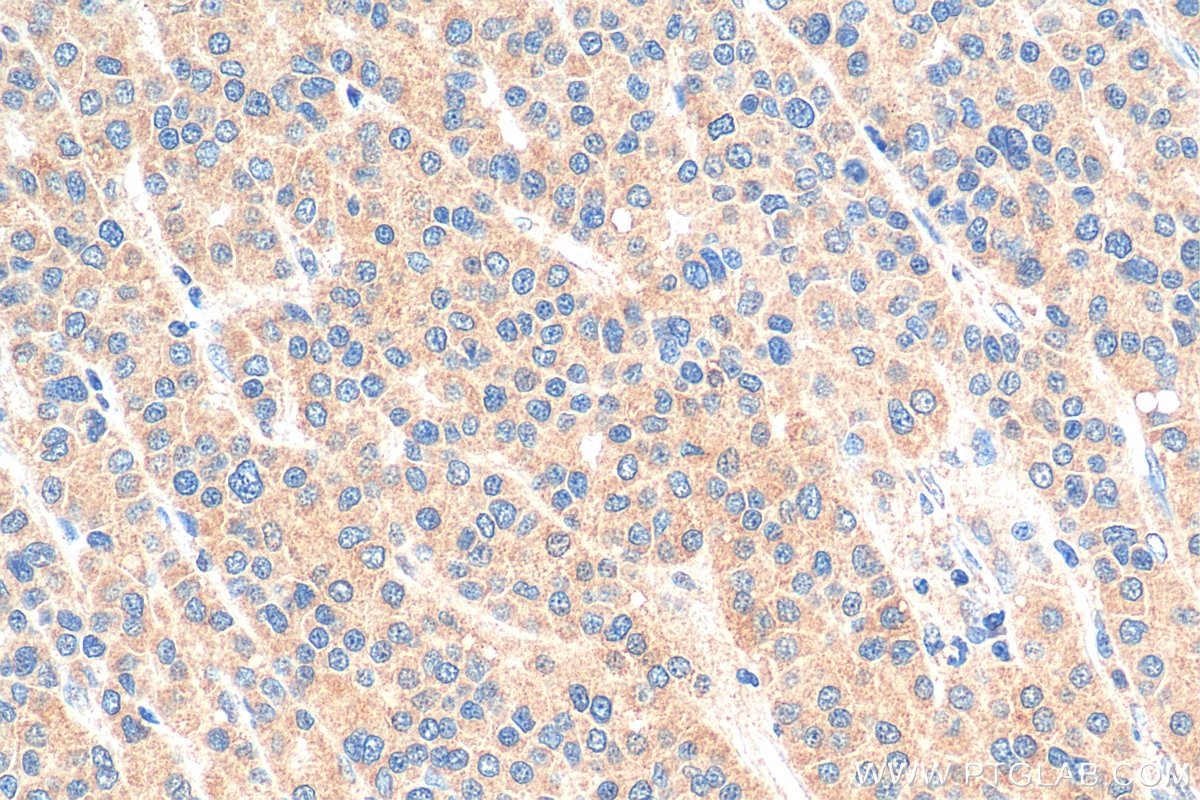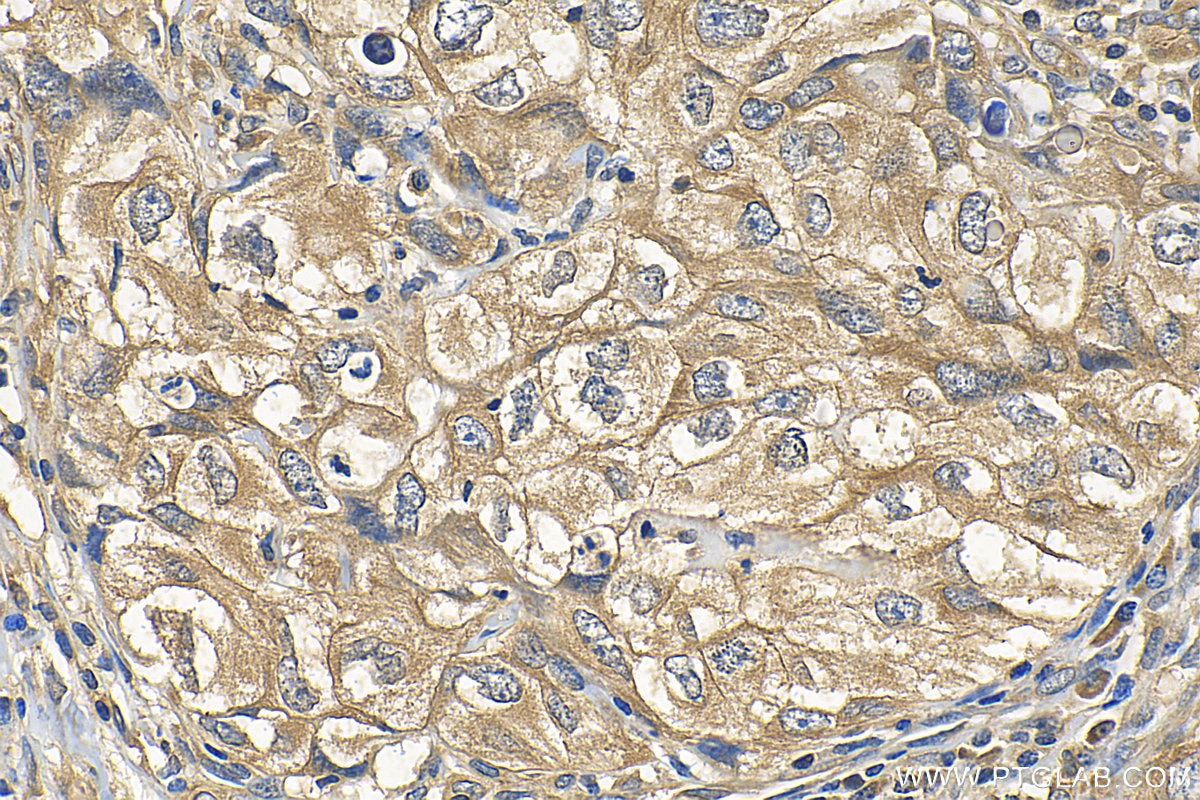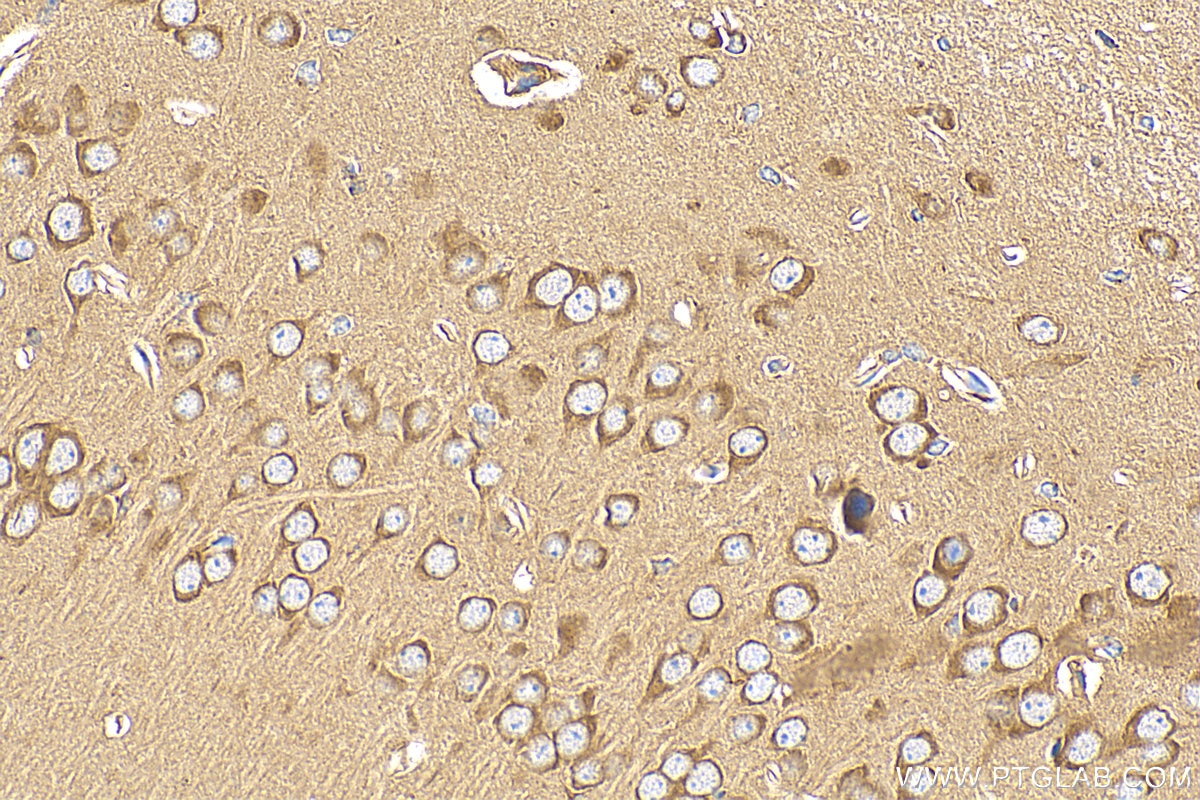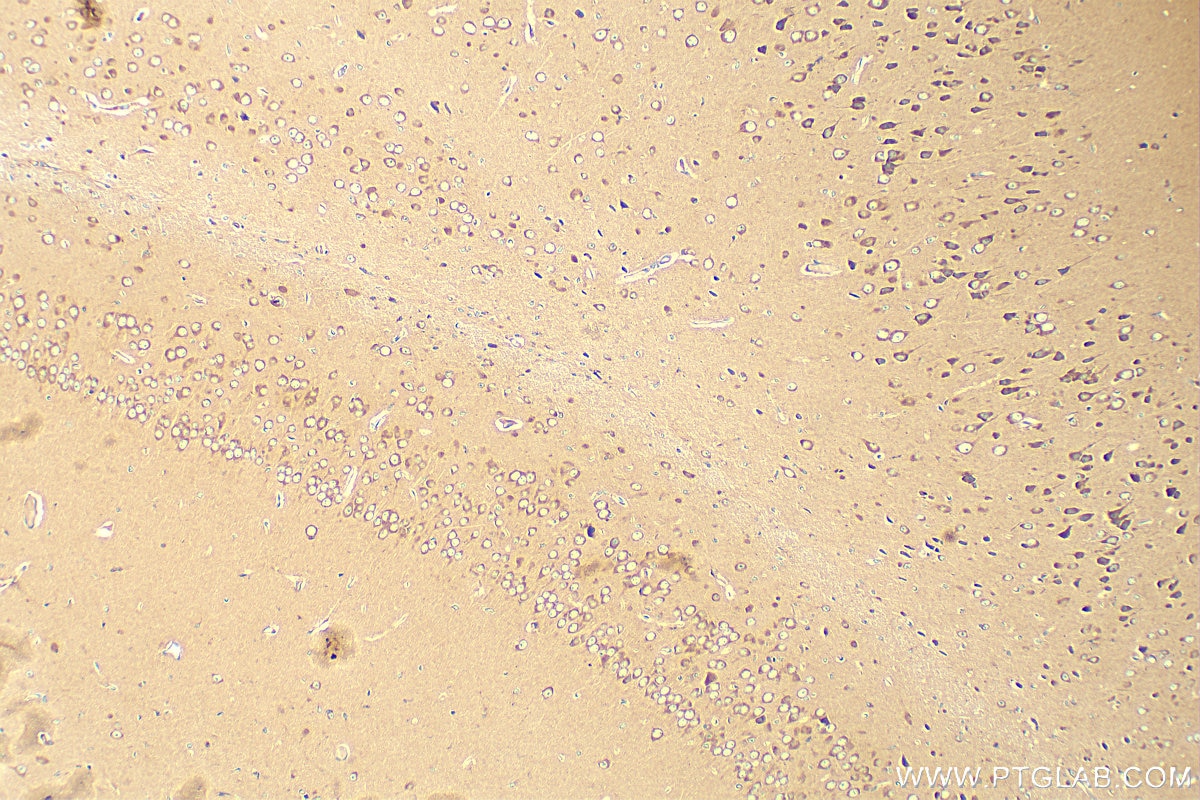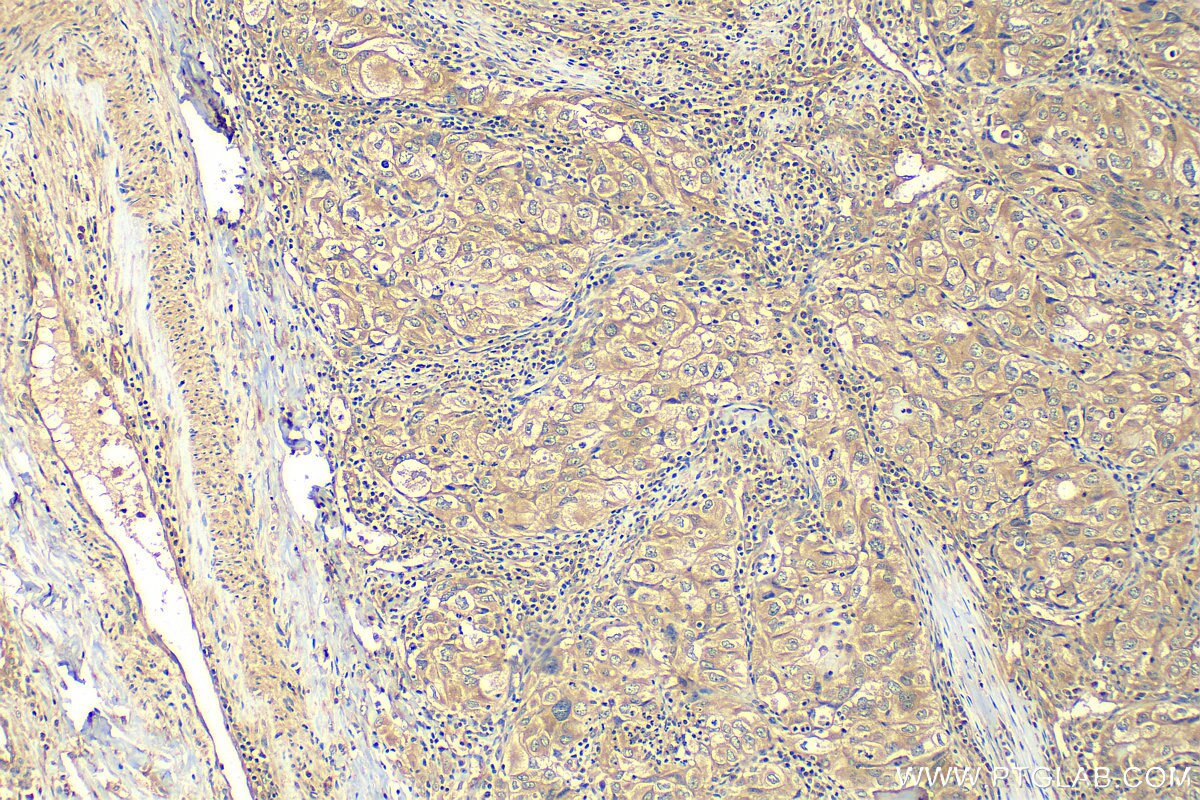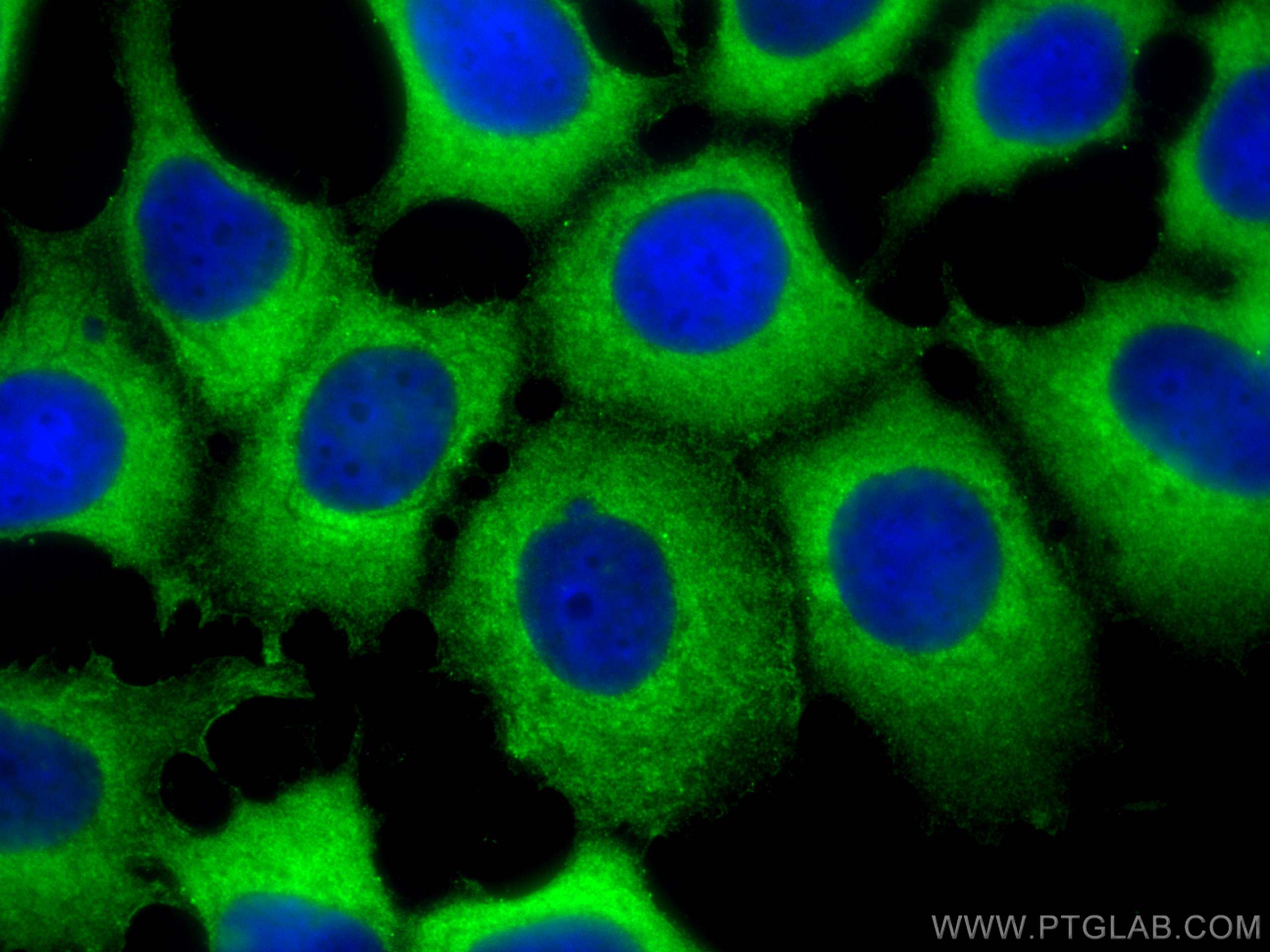- Phare
- Validé par KD/KO
Anticorps Polyclonal de lapin anti-eRF3a/GSPT1
eRF3a/GSPT1 Polyclonal Antibody for WB, IHC, IF/ICC, ELISA
Hôte / Isotype
Lapin / IgG
Réactivité testée
Humain, rat, souris
Applications
WB, IHC, IF/ICC, ELISA
Conjugaison
Non conjugué
N° de cat : 10763-1-AP
Synonymes
Galerie de données de validation
Applications testées
| Résultats positifs en WB | cellules A549, cellules Caco-2, cellules HCT 116, cellules HeLa, cellules HepG2, cellules MOLT-4 |
| Résultats positifs en IHC | tissu de cancer du foie humain, tissu cérébral de souris, tissu de cancer du poumon humain il est suggéré de démasquer l'antigène avec un tampon de TE buffer pH 9.0; (*) À défaut, 'le démasquage de l'antigène peut être 'effectué avec un tampon citrate pH 6,0. |
| Résultats positifs en IF/ICC | cellules MCF-7, |
Dilution recommandée
| Application | Dilution |
|---|---|
| Western Blot (WB) | WB : 1:2000-1:12000 |
| Immunohistochimie (IHC) | IHC : 1:50-1:500 |
| Immunofluorescence (IF)/ICC | IF/ICC : 1:200-1:800 |
| It is recommended that this reagent should be titrated in each testing system to obtain optimal results. | |
| Sample-dependent, check data in validation data gallery | |
Applications publiées
| KD/KO | See 2 publications below |
| WB | See 16 publications below |
| IHC | See 2 publications below |
| IF | See 4 publications below |
Informations sur le produit
10763-1-AP cible eRF3a/GSPT1 dans les applications de WB, IHC, IF/ICC, ELISA et montre une réactivité avec des échantillons Humain, rat, souris
| Réactivité | Humain, rat, souris |
| Réactivité citée | Humain, souris |
| Hôte / Isotype | Lapin / IgG |
| Clonalité | Polyclonal |
| Type | Anticorps |
| Immunogène | eRF3a/GSPT1 Protéine recombinante Ag1184 |
| Nom complet | G1 to S phase transition 1 |
| Masse moléculaire calculée | 68 aa, 4 kDa |
| Poids moléculaire observé | 80-85 kDa |
| Numéro d’acquisition GenBank | BC009503 |
| Symbole du gène | GSPT1 |
| Identification du gène (NCBI) | 2935 |
| Conjugaison | Non conjugué |
| Forme | Liquide |
| Méthode de purification | Purification par affinité contre l'antigène |
| Tampon de stockage | PBS with 0.02% sodium azide and 50% glycerol |
| Conditions de stockage | Stocker à -20°C. Stable pendant un an après l'expédition. L'aliquotage n'est pas nécessaire pour le stockage à -20oC Les 20ul contiennent 0,1% de BSA. |
Informations générales
The eukaryotic Release Factor 3 (eRF3) is a GTPase that associates with eRF1 in a complex that mediates translation termination. Eukaryotic release factor 3 (eRF3) has many functions in eukaryotic cells, such as controlling the regulation of the cell cycle at the G1 to S phase transition, and regulating protein synthesis as a GTP dependent stimulator of eRF1 in translation termination. It was also reported to play a key role as an initiator of the mRNA degradation machinery in the recycling of ribosomes in successive cycles of translation,and probably also in transcription regulation. eRF3a, also known as GSPT1, is one subunit of eRF3(PMID:15917414,12923185). It involves in translation termination in response to the termination codons UAA, UAG and UGA and stimulates the activity of ERF1. eRF3a/GSPT1 exists some isoforms with MV 69 kDa and 56 kDa. Identification of a processed form of eRF3a/GSPT1 as a BIR3-binding protein-Using a GST-BIR3 fusion protein as an affinity reagent to purify new IAP binding proteins from extracts of human cells and mouse tissues, we previously isolated 3 proteins of molecular weights 23, 38 and 80 kDa. 80 kDa band confirmed that it is a processed form of the human GSPT1/eRF3a protein, lacking the first 69 residues(PMID: 12865429).
Protocole
| Product Specific Protocols | |
|---|---|
| WB protocol for eRF3a/GSPT1 antibody 10763-1-AP | Download protocol |
| IHC protocol for eRF3a/GSPT1 antibody 10763-1-AP | Download protocol |
| IF protocol for eRF3a/GSPT1 antibody 10763-1-AP | Download protocol |
| Standard Protocols | |
|---|---|
| Click here to view our Standard Protocols |
Publications
| Species | Application | Title |
|---|---|---|
Nature A novel cereblon modulator recruits GSPT1 to the CRL4(CRBN) ubiquitin ligase.
| ||
Mol Cell Spatiotemporal Proteomic Analysis of Stress Granule Disassembly Using APEX Reveals Regulation by SUMOylation and Links to ALS Pathogenesis. | ||
Mol Cell Mammalian hyperplastic discs homolog EDD regulates miRNA-mediated gene silencing. | ||
Cell Rep Med Development of an orally bioavailable CDK12/13 degrader and induction of synthetic lethality with AKT pathway inhibition | ||
Cardiovasc Res Readthrough of nonsense mutation W822X in the SCN5A gene can effectively restore expression of cardiac Na+ channels.
| ||
J Biol Chem A Novel Rac1-GSPT1 Signaling Pathway Controls Astrogliosis Following Central Nervous System Injury. |
